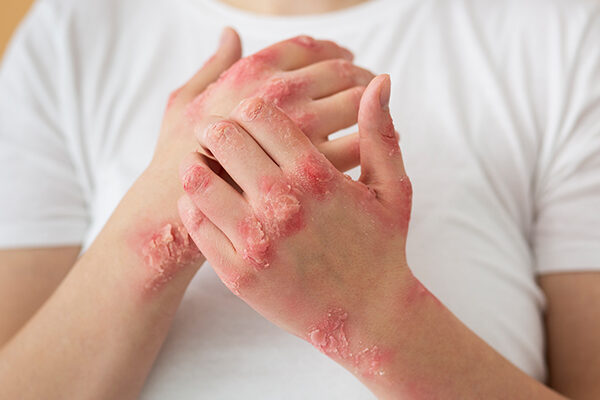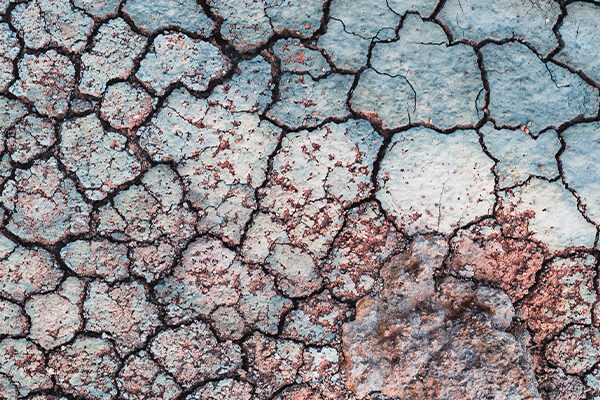
Armpit rashes can be a source of significant discomfort and embarrassment. They can affect anyone, regardless of age or gender, and can be caused by various factors, including heat, sweat, friction, and allergic reactions. Knowing how to prevent and treat this condition effectively is crucial for maintaining skin health and comfort. This blog provides a comprehensive guide on preventing and treating armpit rash, with a focus on practical tips and evidence-based solutions.
What is an Armpit Rash?
Armpit rash is characterized by redness, itching, and irritation in the underarm area. It can result from various causes such as allergic reactions, bacterial or fungal infections, excessive sweating, and friction from clothing. Armpit rashes can vary in severity, ranging from mild irritation to painful, swollen areas that may require medical attention.
Different Types of Skin Rashes: A Comparison
Exploring the differences between types of skin rashes can help narrow down your diagnosis. Here’s a quick comparison:
| Type of Rash | Cause | Appearance | Treatment |
|---|---|---|---|
| Contact Dermatitis | Allergic reaction | Red, itchy, swollen patches | Avoid allergens, use cortisone cream |
| Heat Rash | Excessive sweating | Small red bumps, often itchy | Cool the area, keep it dry |
| Fungal Infection | Overgrowth of yeast | Red, scaly patches, sometimes itchy | Antifungal creams |
| Razor Burn | Shaving irritation | Red, inflamed bumps | Moisturize, apply soothing cream |
What are the Causes of Armpit Rash?
Several factors can contribute to the development of these rashes:
- Allergic Reactions: Personal care products like deodorants, antiperspirants, soaps, and laundry detergents can contain ingredients that trigger allergic reactions.
- Friction: Tight clothing or excessive rubbing of the skin can cause friction, resulting in irritation and heat rashes in the armpit.
- Infections: Bacterial and fungal infections are common causes. The warm, moist environment of the armpit is an ideal breeding ground for bacteria and fungi.
- Heat and Sweat: Excessive sweating, especially in hot and humid conditions, can lead to heat rashes. This condition, also known as miliaria, occurs when sweat ducts become blocked, trapping sweat under the skin and causing an itchy rash.
- Shaving: Shaving can cause micro-tears in the skin, leading to irritation and increasing the risk of infections and armpit rashes.
- Hidradenitis Suppurativa: This chronic skin condition leads to the formation of painful lumps under the skin, often in the armpits, which can develop into painful rashes or sores.
Prevalence of Armpit Rash
Affecting a significant portion of the population. According to a study published in the Journal of Clinical and Aesthetic Dermatology, approximately 7-10% of people experience some form of armpit dermatitis at any given time. The prevalence may be higher in individuals with pre-existing skin conditions such as eczema or those living in hot, humid climates.
Preventing Armpit Rash
Prevention is key when it comes to managing armpit rashes. Here are some effective strategies to help you avoid developing this uncomfortable condition:
- Choose Gentle Products: Opt for hypoallergenic and fragrance-free personal care products. Look for deodorants and antiperspirants specifically formulated for sensitive skin to minimize the risk of allergic reactions.
- Wear Loose Clothing: Tight clothing can cause friction and trap sweat and is one of the leading causes of rashes. Choose loose, breathable fabrics like cotton to allow air circulation and reduce moisture buildup.
- Maintain Good Hygiene: Regularly wash your underarms with a mild soap and water to remove sweat, bacteria, and other irritants. Pat the area dry gently with a towel to avoid friction.
- Keep Armpits Dry: Use an antiperspirant to control sweating and keep your armpits dry. You can also apply talcum powder or cornstarch to absorb excess moisture.
- Shave with Care: If you shave your armpits, use a sharp razor and a gentle shaving cream or gel. Shave in the direction of hair growth to minimize irritation and follow-up with a soothing, alcohol-free aftershave lotion.
- Avoid Known Allergens: Be aware of any substances that have previously caused skin reactions and avoid products containing those ingredients.
- Stay Cool: In hot and humid weather, try to stay in air-conditioned environments or use fans to keep cool. Wearing moisture-wicking fabrics can also help keep your skin dry.
Treating Armpit Rash
There are several treatment options available to alleviate discomfort and promote healing if you have armpit rashes:
- Identify the Cause: Determine the underlying cause of the armpit rash. If you suspect an allergic reaction, discontinue the use of the product and switch to a hypoallergenic alternative.
- Topical Treatments: Over-the-counter hydrocortisone creams can reduce inflammation and itching. For fungal infections, antifungal creams or powders can be effective. If the rash is bacterial, antibiotic ointments may be necessary.
- Cool Compresses: Applying a cool, damp cloth to the affected area can help soothe irritation and reduce inflammation.
- Moisturize: Keeping the skin hydrated with a gentle, fragrance-free moisturizer can prevent dryness and promote healing.
- Avoid Irritants: During the healing process, avoid using any products that may further irritate the skin. Stick to mild, hypoallergenic products until the rash subsides.
- Stay Dry: Keep your armpits dry and clean. Change out of sweaty clothes promptly and shower after intense physical activity to remove sweat and bacteria.
- Medical Treatment: If the rash is severe, persistent, or accompanied by other symptoms like fever or swelling, consult a healthcare professional. They may prescribe stronger medications or conduct tests to determine the exact cause.
Home Remedies for Armpit Rash
In addition to conventional treatments, several home remedies can help soothe and heal the rashes:
- Aloe Vera: Aloe vera has natural anti-inflammatory and antibacterial properties. Apply pure aloe vera gel to the affected area for relief from itching and irritation.
- Coconut Oil: Coconut oil is a natural moisturizer with antibacterial properties. Applying a thin layer to the rash can help soothe the skin and prevent infections.
- Oatmeal Baths: Adding colloidal oatmeal to your bath can help soothe irritated skin and reduce itching.
- Apple Cider Vinegar: Dilute apple cider vinegar with water and apply it to the rash using a cotton ball. Its antibacterial properties can help prevent infections.
- Tea Tree Oil: Tea tree oil has antifungal and antibacterial properties. Dilute a few drops with a carrier oil and apply it to the rash to help reduce inflammation and infection risk.
When to See a Healthcare Provider
While many armpit rashes can be treated at home, certain situations warrant medical attention:
- Persistent Symptoms: If the rash does not improve with home treatment or over-the-counter medications, seek medical advice.
- Severe Discomfort: Intense itching, pain, or swelling that interferes with daily activities should be evaluated by a healthcare professional.
- Signs of Infection: Redness, warmth, pus, or fever accompanying the rash are signs of infection and require medical treatment.
- Underlying Conditions: If you have a pre-existing skin condition like eczema or psoriasis, consult your doctor for specialized care.
Conclusion
An armpit rash can be an uncomfortable and sometimes embarrassing condition, but with the right prevention and treatment strategies, you can effectively manage and even avoid it. By understanding the causes, practicing good hygiene, using gentle products, and knowing when to seek medical advice, you can keep your underarm skin healthy and rash-free. Remember, taking proactive steps to prevent armpit rashes is always better than dealing with the discomfort after they occur.





